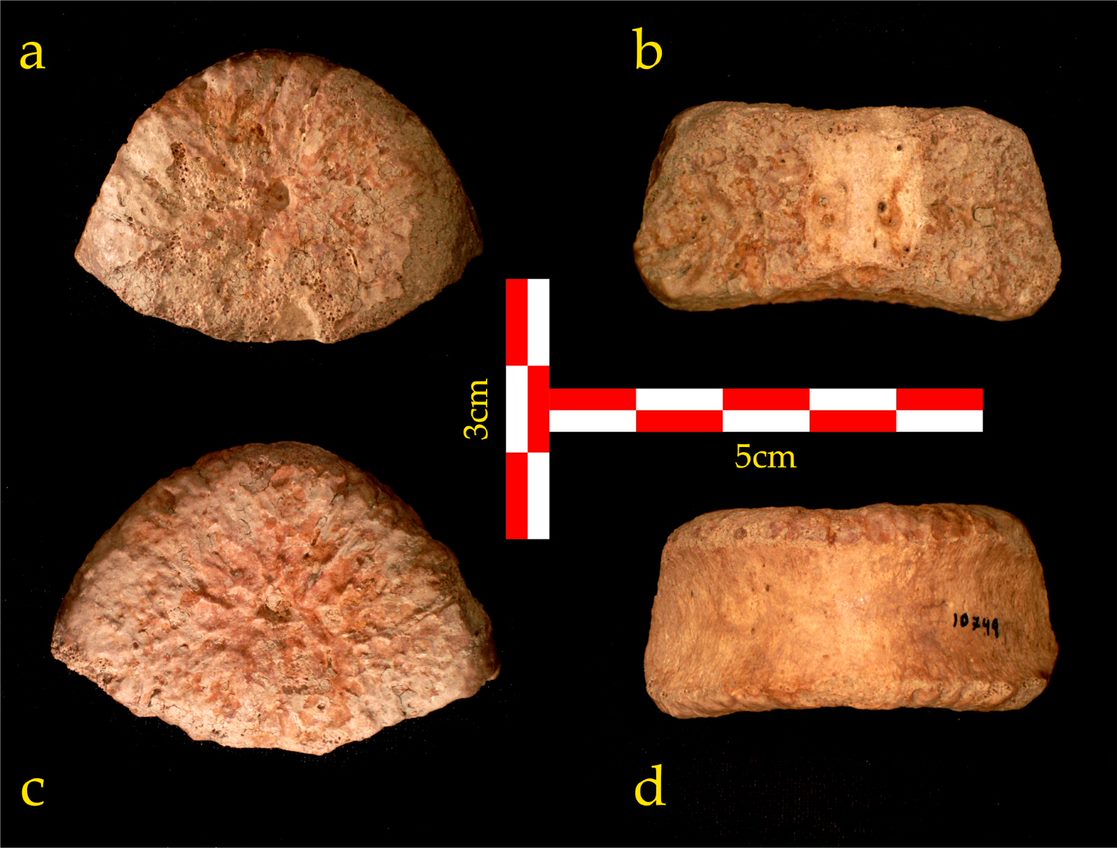(JNS) Israeli archeologists have discovered a 1.5-million-years-old human vertebra—the earliest evidence of an ancient human discovered in the country, according to a report published Wednesday in the peer-reviewed journal Scientific Reports.
The study was a joint project of researchers from Bar-Ilan University, Ono Academic College, the University of Tulsa and the Israel Antiquities Authority. The discovery helps prove that ancient human migration from Africa to Eurasia occurred in waves; the first reached the Republic of Georgia in the Caucasus approximately 1.8 million years ago and the second in Ubeidiya, in the Jordan Valley, 1.5 million years ago.
“The analysis we conducted shows that the vertebra from Ubeidiya belonged to a young individual 6-12 years old, who was tall for his age,” explained Professor Ella Been of Ono Academic College. “Had this child reached adulthood, he would have reached a height of over 180 centimeters (70.8 inches). This ancient human is similar in size to other large hominins found in East Africa and is different from the short-statured hominins that lived in Georgia.”
Ubeidiya is located near Kibbutz Beit Zera, south of the Sea of Galilee.
“The prehistoric site of Ubeidiya is significant for archeological and evolutionary studies because it is one of the few places that contain preserved remnants of the early human exodus from Africa,” a release by the researchers explained. “The site is the second-oldest archeological site outside Africa.”
Ubeidiya was first excavated between 1960 and 1999, revealing a collection of extinct animal bones and stone artifacts. Fossil species include saber-toothed tiger, mammoths and a giant buffalo, alongside animals not found today in Israel, such as baboons, warthogs, hippopotamuses, giraffes and jaguars.
Excavations were recently resumed by Professor Miriam Belmaker of the University of Tulsa and Dr. Omry Barzilai of the IAA, this time using new absolute dating methods to refine the site’s dating and to study the paleoecology and paleoclimate of the region.
All of the site’s findings are stored at the Hebrew University’s National Natural History Collections, which is where Belmaker discovered the human vertebra that had initially been unearthed in 1966.
“Due to the difference in size and shape of the vertebra from Ubeidiya and those found in the Republic of Georgia, we now have unambiguous evidence of the presence of two distinct dispersal waves,” said Dr. Alon Barash of the Azrieli Faculty of Medicine of Bar-Ilan University. “It seems, then, that in the period known as the Early Pleistocene, we can identify at least two species of early humans outside of Africa.”
He said that “each wave of migration was that of different kinds of humans—in appearance and form, technique and tradition of manufacturing stone tools, and ecological niche in which they lived.”
JNS



